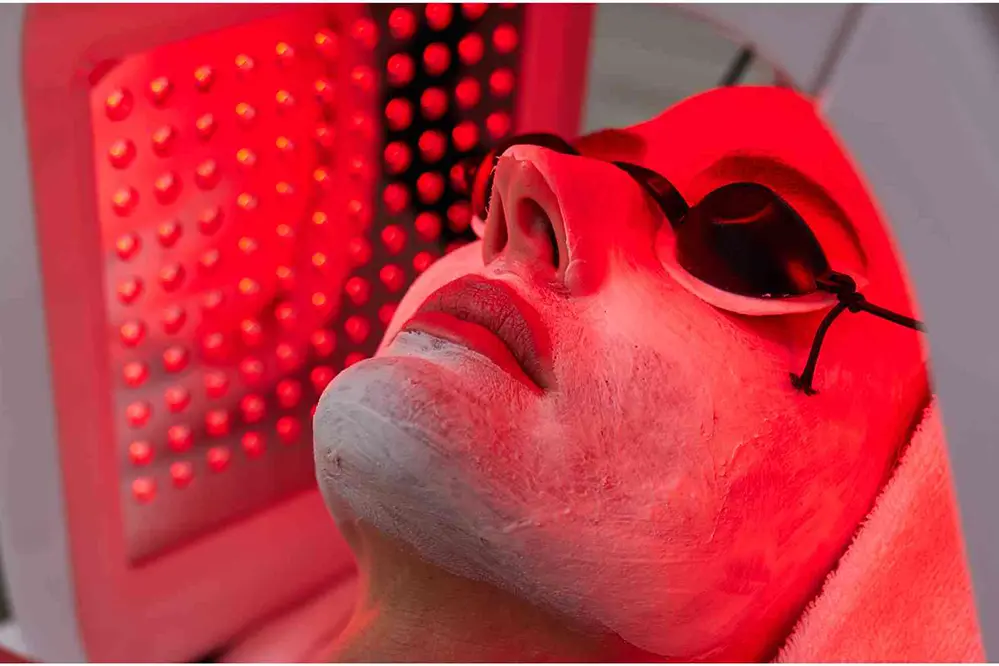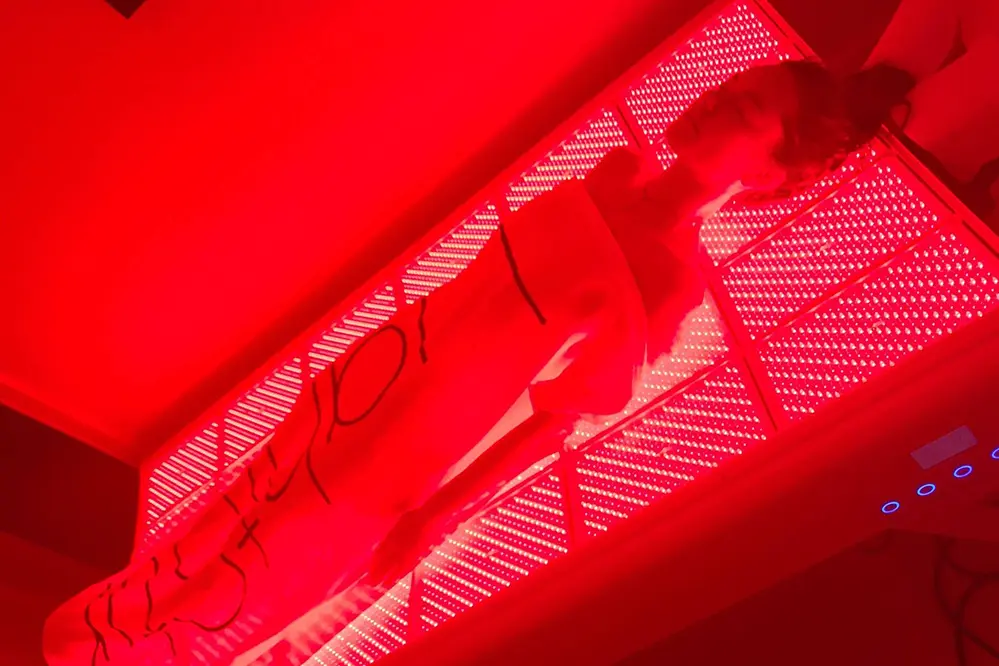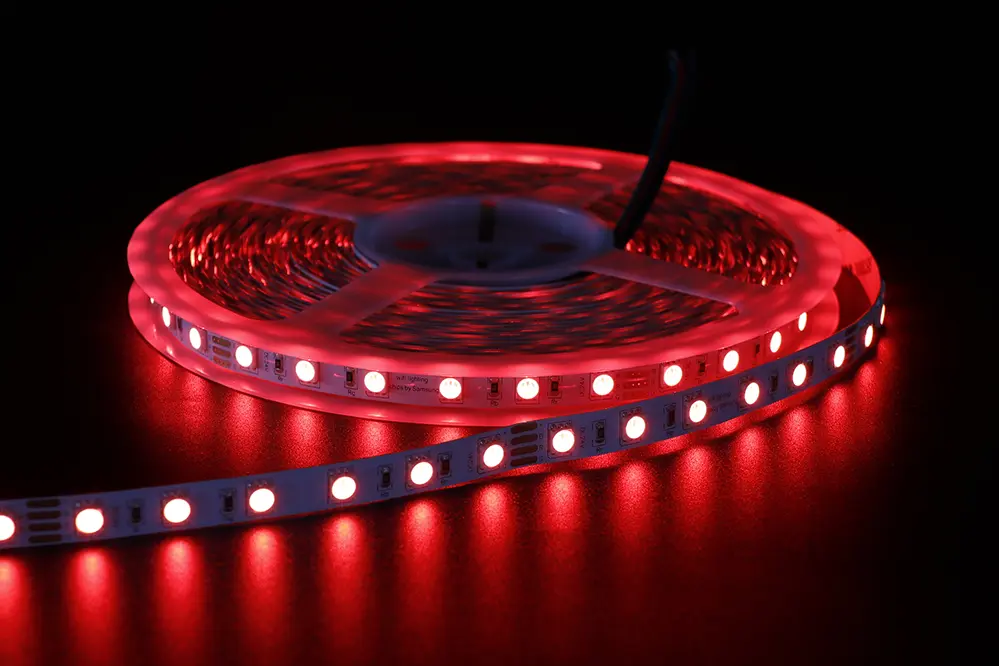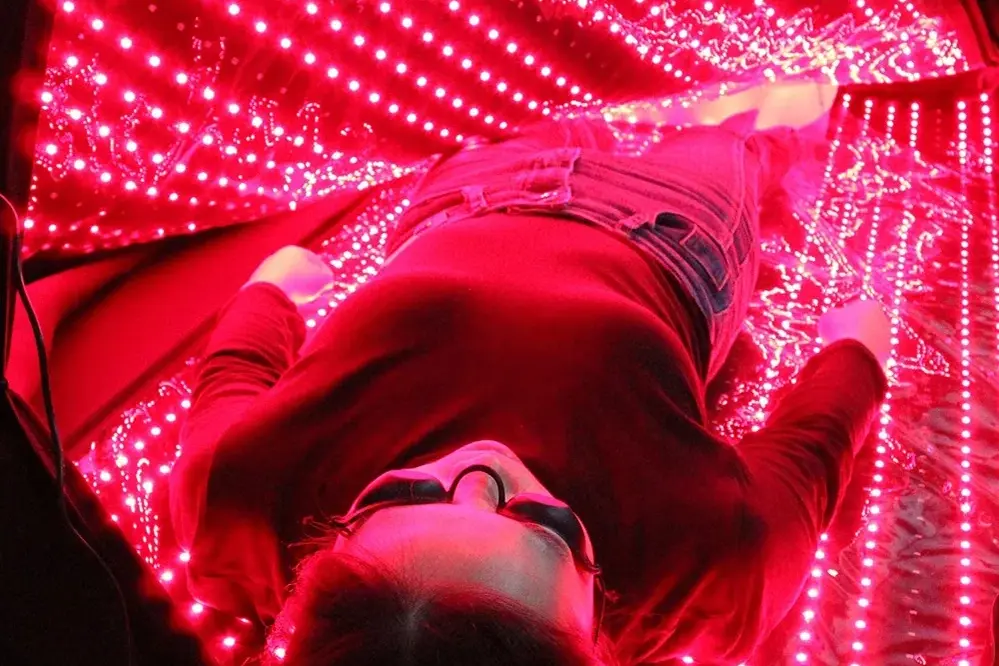“Can you use LED strips for red light therapy?” This bold question challenges conventional wisdom and invites a deeper exploration into the world of red light therapy. As more people seek non-invasive methods to enhance their health and well-being, the allure of affordable LED strips becomes increasingly compelling.
Many individuals face common challenges when considering red light therapy, such as the high cost of professional devices and uncertainty about their efficacy. Misconceptions abound, leading to hesitation and missed opportunities for potential health benefits. Understanding these challenges is crucial for making informed decisions.
Red light therapy offers a myriad of benefits, including pain relief, improved skin health, and enhanced cellular repair. The significance of these benefits cannot be overstated, as they contribute to overall wellness and quality of life. Exploring the feasibility of using LED strips for red light therapy opens up new possibilities for those seeking accessible and cost-effective solutions.
In this article, we will cover key points such as the science behind red light therapy, the effectiveness of LED strips, and practical tips for incorporating them into your routine. By the end, you’ll be equipped with the knowledge to make informed choices and embrace the potential of red light therapy. So, let’s dive in and uncover the transformative power of red light therapy with LED strips.
What is Red Light Therapy?

Red light therapy is a remarkable healing modality.
This innovative treatment involves the use of low-level wavelengths of red light. Red light therapy has been shown to offer a myriad of potential benefits, ranging from improved skin health and enhanced cellular repair to reduced inflammation and pain relief. Indeed, the appeal of this non-invasive therapy is steadily garnering attention across various medical and wellness spheres.
Its efficacy is supported by scientific evidence.
When red light is applied to the skin, it penetrates deeply into the tissues – stimulating the mitochondria within the cells – the powerhouses that generate energy. This stimulation accelerates healing, reduces downtime, and optimizes overall cellular function.
Furthermore, red light therapy has been embraced by healthcare professionals, fitness enthusiasts, and beauty experts alike, as they continue to uncover its extensive applications. As 2023 unfolds, the enthusiasm around this innovative therapy remains robust, promising a future where radiant health is accessible to more individuals.
Benefits of Red Light Therapy
Red light therapy offers an array of transformative benefits that can significantly enhance one’s overall well-being, making it a powerful addition to both medical and aesthetic regimens.
It’s known to improve skin health.
The therapy can stimulate collagen production, aiding in skin rejuvenation and reducing wrinkles.
It promotes anti-inflammatory effects, which can alleviate pain and accelerate healing in tissues.
Enhancing cellular repair mechanisms, red light therapy supports faster recovery from injuries and surgeries, potentially reducing the need for medication.
In addition, it has proven beneficial for mood enhancement, combating seasonal affective disorder, and improving sleep quality by regulating circadian rhythms.
Truly, the scope of red light therapy’s impact on health is vast, igniting hope for diverse and innovative treatment possibilities.
Traditional Devices for Red Light Therapy

Red light therapy has been employed using various technological mediums, including traditional devices specifically designed for optimal therapeutic results.
These devices often comprise professional-grade materials to ensure consistency.
Typically, light panels and handheld devices are dominant, featuring LEDs (light-emitting diodes) calibrated for therapeutic wavelengths, such as 660nm.
Medical-grade red light beds are another prevalent option, beneficial for full-body treatments.
These traditional devices are engineered to distribute red light uniformly, ensuring comprehensive coverage and efficacy for various conditions.
By utilizing such expertly crafted tools, individuals can expect to achieve significant and sustained health benefits through precise and reliable red light therapy.
What Are LED Strips?

LED strips are flexible circuit boards populated with light-emitting diodes (LEDs), typically enclosed in a durable casing. They are designed for easy installation.
These strips can be customized to emit various colors, including red.
LED strips are known for their energy efficiency and versatility, often used in interior and exterior lighting designs.
Additionally, they are available in different lengths, brightness levels, and waterproof ratings.
LED strips offer the convenience of being cut to specific lengths, affording users the flexibility to tailor their lighting solutions to various applications.
Furthermore, the ease of installation makes LED strips a popular choice for DIY home improvement projects and professional settings alike.
Their adaptability and affordability make LED strips an excellent candidate for a broad range of uses.
Can You Use LED Strips for Red Light Therapy?

Yes, you can certainly use LED strips for red light therapy; however, there are several critical factors you must consider to achieve effective results.
Primarily, the wavelength of the light is paramount.
Red light therapy benefits typically manifest at wavelengths ranging from 630 to 660 nanometers, alongside near-infrared light, which can also contribute to therapeutic effects.
Consequently, ensure that the LED strips you select fall within this optimal range for maximum efficacy.
Moreover, consistency and intensity of the light exposure play vital roles in the therapeutic process, meaning standard LED strips might not meet these rigorous requirements.
It’s worth considering investing in specialized LED products designed specifically for red light therapy, as they guarantee proper wavelength, intensity, and exposure consistency.
Ultimately, while LED strips can be adapted for red light therapy, their inherent limitations suggest a more targeted approach may be prudent for achieving the best therapeutic outcomes.
Understanding LED Strip Specifications
When considering LED strips for red light therapy, understanding their specifications is crucial for achieving optimal results, especially ensuring they emit around 660nm for maximum efficacy.
First and foremost, it is essential to verify the wavelength accuracy of the LED strips. As previously mentioned, the ideal therapeutic range is between 630 to 660 nanometers, ensuring effective red light penetration into the skin. Properly specified LED strips within this range promote the stimulation of cellular energy, contributing to various health benefits.
Additionally, power output and intensity are critical metrics to evaluate. Standard LED strips may not deliver the necessary intensity required for therapeutic impact. Opt for LED strips that specify adequate power output (measured in milliwatts or joules per centimeter squared) to ensure effective therapy sessions with consistent and sufficient ambient light exposure.
Lastly, confirm the uniformity and coverage provided by the LED strips. Red light therapy necessitates even and widespread illumination for comprehensive treatment. Quality LED strips should offer consistent light distribution without significant hot spots or dim areas, ensuring the targeted skin receives uniform therapeutic benefits. These specifications are fundamental to maximizing the efficacy of red light therapy using LED strips.
Comparing LED Strips to Red Light Therapy Devices
Comparing LED strips to dedicated red light therapy devices reveals significant differences.
Both LED strips and red light therapy devices employ light-emitting diodes to deliver therapeutic benefits. The critical distinction lies in the specificity and optimization of parameters tailored for therapeutic use. Dedicated red light therapy devices are typically calibrated for precise wavelengths, intensities, and coverage to maximize health benefits, whereas standard LED strips may lack these customizations.
Dedicated devices offer higher intensity.
Additionally, dedicated red light therapy devices often include built-in features such as timers and heat dissipation systems to ensure safe, controlled usage. Furthermore, their design typically incorporates lenses or reflectors to enhance light penetration and uniform distribution, contributing to the overall efficacy of the therapy.
While LED strips can be a cost-effective solution, they often fall short in offering the rigorous performance standards found in specialized red light therapy devices. Leveraging the purpose-built nature of professional devices ensures a more reliable and effective therapeutic experience, aligning with the highest standards of wellness technology in 2023 and beyond.
Key Factors in Choosing LED Strips
When considering LED strips for red light therapy, a myriad of pivotal aspects must be meticulously evaluated. Foremost among these is the wavelength range, which should ideally fall between 600 to 650 nanometers for optimal therapeutic benefits. Additionally, the intensity and distribution uniformity of light output are critical; these factors ensure effective penetration and coverage. Furthermore, attention should be directed towards the strip’s build quality, including heat management capabilities, which are essential for prolonged and effective use. The integration of smart features, such as timers and adjustable settings, can significantly enhance the user experience, ensuring that your red light therapy pursuits are not just cost-effective, but also highly efficacious and safe.
Wavelengths and Light Spectrum
Red light therapy operates within a specific—yet scientifically impactful—range of wavelengths that profoundly influence biological systems.
Wavelengths between 600 to 660 nanometers have been proven highly effective in promoting skin rejuvenation and cellular repair.
Understanding this light spectrum is essential for harnessing the full potential of red light therapy. The efficacy of treatment is greatly dictated by the exact wavelength used, as it determines the depth of penetration into tissues.
Harnessing the correct wavelength—through intelligent use of quality LED strips—enables transformative outcomes, facilitating enhanced cellular functions and overall wellbeing.
Power Output and Intensity
The efficacy of red light therapy is heavily influenced by the power output and intensity of the light source utilized.
High-intensity LED strips can significantly enhance therapeutic outcomes over lower-intensity alternatives.
Power output, often measured in milliwatts per square centimeter (mW/cm²), dictates how effectively light penetrates tissues, fostering a milieu of accelerated cellular repair and rejuvenation.
Choosing powerful LED strips with sufficient intensity is vital for optimizing the benefits of red light therapy. This ensures the energy delivered is adequately absorbed by the body, promoting cellular functionality and holistic health. Therefore, thoroughly researching the power specifications before purchasing is crucial for maximizing therapeutic success.
Safety Considerations with LED Strips
When considering red light therapy, safety is paramount.
Ensuring that the LED strips you use are safe is crucial. Not all LED strips are designed for therapeutic purposes, so using medical-grade strips explicitly intended for red light therapy is advisable. Additionally, adhering to the recommended exposure time minimizes risks and maximizes benefits.
Be mindful of potential overheating issues.
Use LED strips in well-ventilated areas to prevent heat accumulation, which could cause burns or other skin damage. Consider including built-in safety features like automatic shut-off timers to further mitigate risks.
Prioritize protective measures to shield sensitive areas, particularly the eyes, from intense light exposure. Wearing suitable protective eyewear designed to filter out excessive wavelengths can prevent potential damage, ensuring your red light therapy experience remains safe and effective.
How to Set Up LED Strips for Therapy
Setting up LED strips for red light therapy begins with choosing the right products specifically designed for health applications. Secure medical-grade red LED strips, ensuring they emit the appropriate wavelength, typically around 660nm.
Next, identify a suitable area in your home.
Ensure that this spot allows for correct positioning of the LED strips at an optimal distance. Usually, around 12-18 inches from the skin is recommended for effective red light therapy.
Secure the strips firmly and adjust them for even light distribution. Consider using adjustable mounts or stands tailored for LED strips to accommodate different therapy positions. Follow the manufacturer’s guidelines on duration and frequency to yield the maximum benefit.
Lastly, keep a journal to track your therapy sessions, noting any improvements. Monitoring the results helps to refine your setup and optimize your red light therapy journey, fostering lasting health benefits and well-being.
Effective Usage of LED Strips
Once you have set up your LED strips, maximize their therapeutic potential by following these practical steps.
First and foremost, ensure consistent usage by integrating red light therapy into your regular routine. Consistency is key, as incremental, regular exposure fosters more profound cumulative benefits, aiding in everything from skin health to enhanced cellular function. On average, sessions lasting 10-20 minutes, several times a week, are recommended.
Furthermore, it is crucial to position the LED strips at an optimal distance from the target area to ensure the effectiveness of the therapy. Excessive proximity could lead to overheating, whereas being too far reduces the intensity of the beneficial wavelengths.
Lastly, consider complementing your red light therapy with other health practices for an all-encompassing wellness regimen. Combining this cutting-edge therapy with balanced nutrition, regular exercise, and adequate sleep will compound the positive effects, catapulting your health to new heights and invigorating your overall well-being.
Pros and Cons of Using LED Strips
Can you use LED strips for red light therapy? Yes, but there’s much to consider.
Recent years, innovative breakthroughs in light therapy technology have resurged interest in accessible, at-home applications. LED strips offer a versatile and cost-effective entry point.
The primary advantage is affordability. LED strips are remarkably cheaper compared to high-end red light therapy devices, making them an easy initial investment.
However, it’s not all bright lights. Not all LED strips deliver the specific wavelengths required for effective therapy. Quality and functionality can vary.
In conclusion, careful selection is crucial. Ensuring high-quality LED strips can enhance your red light therapy experience effectively.
Feedback from Users of LED Strips
Feedback from users of LED strips for red light therapy has been largely positive, with many highlighting a noticeable improvement in their overall well-being.
Some users report enhanced skin tone and reduced inflammation.
Additionally, individuals have mentioned experiencing quicker recovery times after physical exertions.
Moreover, anecdotal evidence suggests that these LED strips can significantly alleviate joint pain.
Interestingly, several users have noted a marked improvement in their sleep patterns and overall mood, which they attribute to consistent use of LED strips.
In summary, while individual results can vary, the overwhelming consensus is one of satisfaction and noticeable benefits among users of LED strips for red light therapy.
Cost Comparison: LED Strips vs. Therapy Devices
When evaluating the cost of LED strips versus specialized therapy devices for red light therapy, a substantial difference will be apparent, often leaning toward the LED strips’ affordability.
High-quality LED therapy devices can be quite expensive.
These devices typically offer advanced features such as precise wavelength control, higher power output, and larger treatment areas, which justify their elevated pricing.
In contrast, LED strips present a more economical option for those on a budget, providing a basic yet effective means of experiencing red light therapy. Thus, while LEDs offer accessibility, professional-grade devices deliver enhanced performance, further backed by scientific research, ensuring premium outcomes.
Expert Opinions on LED Strips for Therapy
Renowned dermatologists and wellness professionals have explored the applications of LED strips for red light therapy, and their feedback has been promising.
Experts emphasize that consistency plays a crucial role in achieving desired outcomes.
Dermatologists note that while LED strips may lack the precision of medical-grade devices, they can still be a beneficial tool for red light therapy. However, they urge users to manage their expectations, acknowledging the balance between cost and efficacy.
Additionally, industry professionals encourage users to stay informed and consult with healthcare providers to ensure they are utilizing these tools safely and effectively. This fosters a culture of informed self-care, empowering individuals to make decisions that best suit their wellness journeys.
Final Thoughts on Using LED Strips for Red Light Therapy
Red light therapy offers a promising avenue for rejuvenation and healing, leveraging non-invasive methods to promote a wide range of wellness benefits. While LED strips present a more affordable and accessible alternative to professional-grade devices, it is crucial for users to calibrate their expectations. The inherent limitations of consumer-grade technology may lead to varied results, but with consistent application and patience, individuals can still harness the potential of LED strips to achieve positive health outcomes.
Ultimately, the journey towards wellness through red light therapy is deeply personal. By embracing informed decision-making and maintaining realistic expectations, enthusiasts can cultivate a proactive and rewarding approach to their health. Whether using professional devices or LED strips, the commitment to a routine and the pursuit of holistic well-being can lead to significant advancements in one’s overall health and vitality.





